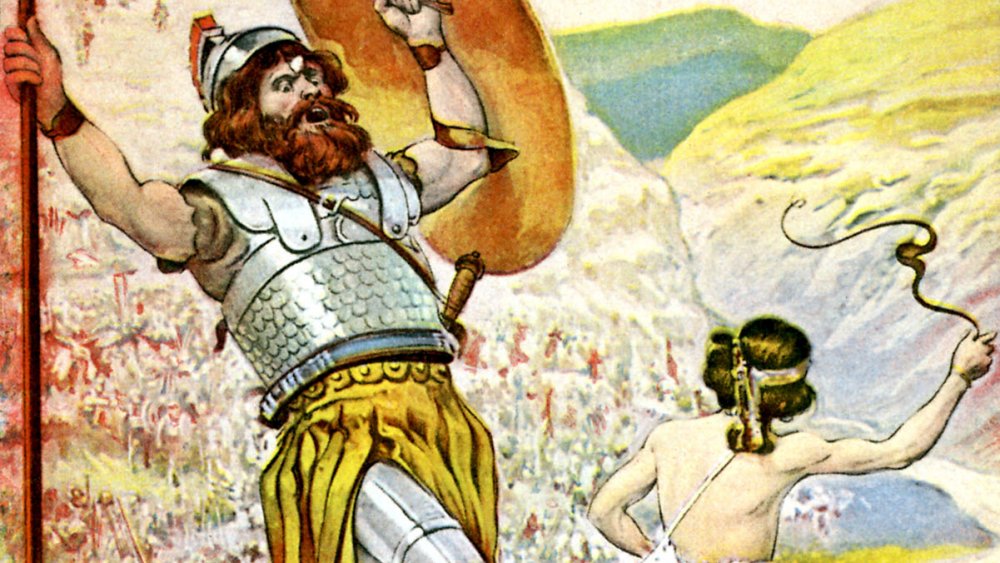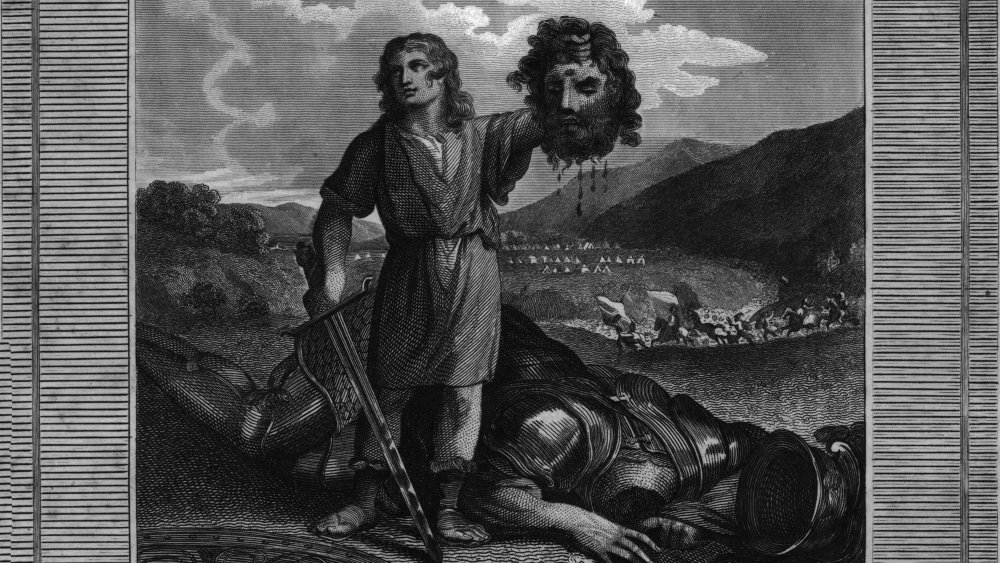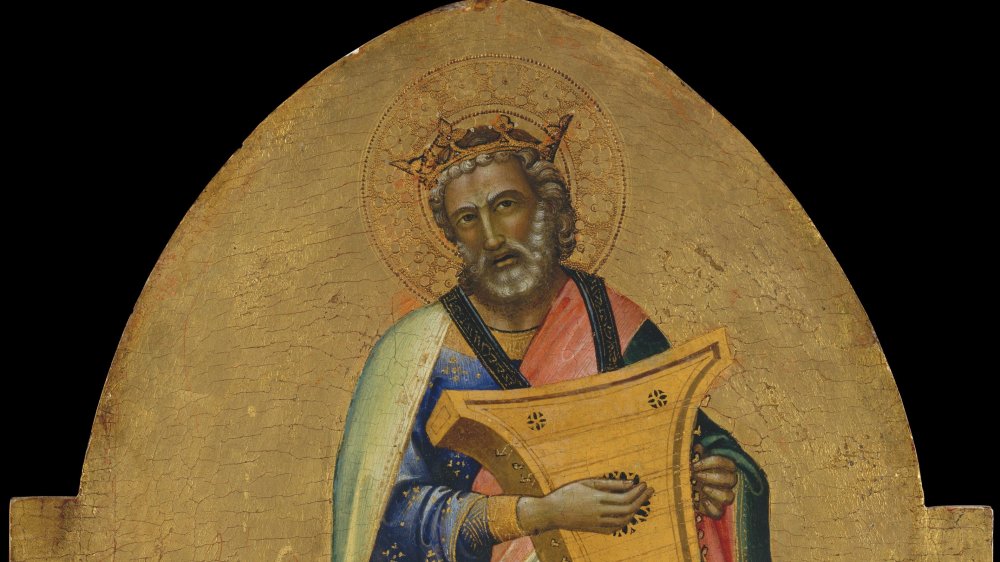The Untold Truth Of David And Goliath
It's one of best-known stories in the Bible, found in Chapter 17 of the First Book of Samuel. The imagery varies, depending on which translation of the Old Testament you're using (and/or the budget of the made-for-TV adaptation you're watching), but the gist is that Goliath topped out at around 10 feet tall and was bearing lo, a whole lot of brass, both literally (armor, helmet, shin pads) and metaphorically. It's become a dramatic fall-back trope ever since: Our best guy fights your best guy, mano-a-mano. Winner takes all, kingdom-wise. Goliath the Philistine calls out the Israelites, who are described in the King James translation as "dismayed, and greatly afraid." And who could blame them?
David, a young buck of a shepherd boy with a heart of gold and God on his side, accepts the call to battle. Goliath laughs a jolly green subwoofer laugh and gets ready for some theological Hulk Smash action. "Come to me," says Goliath, "and I will give thy flesh unto the fowls of the air, and to the beasts of the field." The bright-eyed lad lets fly a righteous pebble from his humble sling, clocking his oversized foe right between his baby blues. The big guy goes down, the bad guys lose. Israel is saved, and David promptly cuts off the big guy's head.
Like just about every story in the Old Testament, the tale of David and Goliath is deeply fascinating and more complex than it's given credit for, and remarkably dark once you get past the part that'll fit into a VeggieTales episode.
Let's start with Goliath
Not much is said about Goliath in the Bible. We know that he's a champion of the Philistines, sort of the Decepticons to the Old Testament's Israelites. 1 Samuel 17 states that he hailed from the citystate of Gath, a region theorized to have existed in the middle of modern day Israel.
As stories tend to do, this tale changed as time went on. When the story first started circulating, Goliath wasn't described as particularly massive. He's never referred to as a "giant" in the text, despite references to big unfriendly abominations like the Nephelim in Genesis. His height is given at "six cubits and a span," or around nine and a half feet tall, but scholars have pointed out that older descriptions found in the Dead Sea Scrolls put him at four cubits and a span. That's about six foot nine — not the size of an Avengers-level threat, but definitely tall enough that people would ask if he played basketball.
In point of fact, the Bible doesn't make a huge deal about Goliath's size at all. Samuel only brings it up once, and spends more time describing what the big guy's armor and spear were made out of. David, while chastising King Saul and his soldiers for not stabbing the Philistine champion to death, mentions that Goliath is uncircumcised twice, but never brings up his physical stature. The big guy should've been grateful that it was just his head that got chopped off at the end of the story.
David's a little more complicated
David continued on to become one of the most well known characters in the Abrahamic faiths, brought up in the Old and New Testaments as well as the Quran. His defeat of Goliath, within the context of the story, had less to do with a surprise win from a sucker bet and more to do with the righteous overcoming the unworthy — King Saul refuses to fight for his people, while a shepherd recognizes the need to kill a proverbial lion to save the metaphorical sheep.
David goes on to become the new king after some deeply Game of Thrones-adjacent skullduggery.
Speaking of George R.R. Martin stories, in 2 Samuel, King David spots a pretty lady on a rooftop, finds out that she's married, summons her, impregnates her, then tries to cover it up. Learning that her husband is a soldier in his army, David has the man brought home for a quick respite, hoping that he'll spend some alone time with his wife and figure that the forthcoming bundle of joy was the fruit of his own loins. When the guy refuses to go home, basically stating that it wouldn't feel right, knowing that his buds are still on the battlefield, David gets him plastered and tries again. When that fails, the King has the man killed on the down low, arranging for an "accidental" death in battle, and marries his widow.
Anyway, that's where that claymation character got his name.


